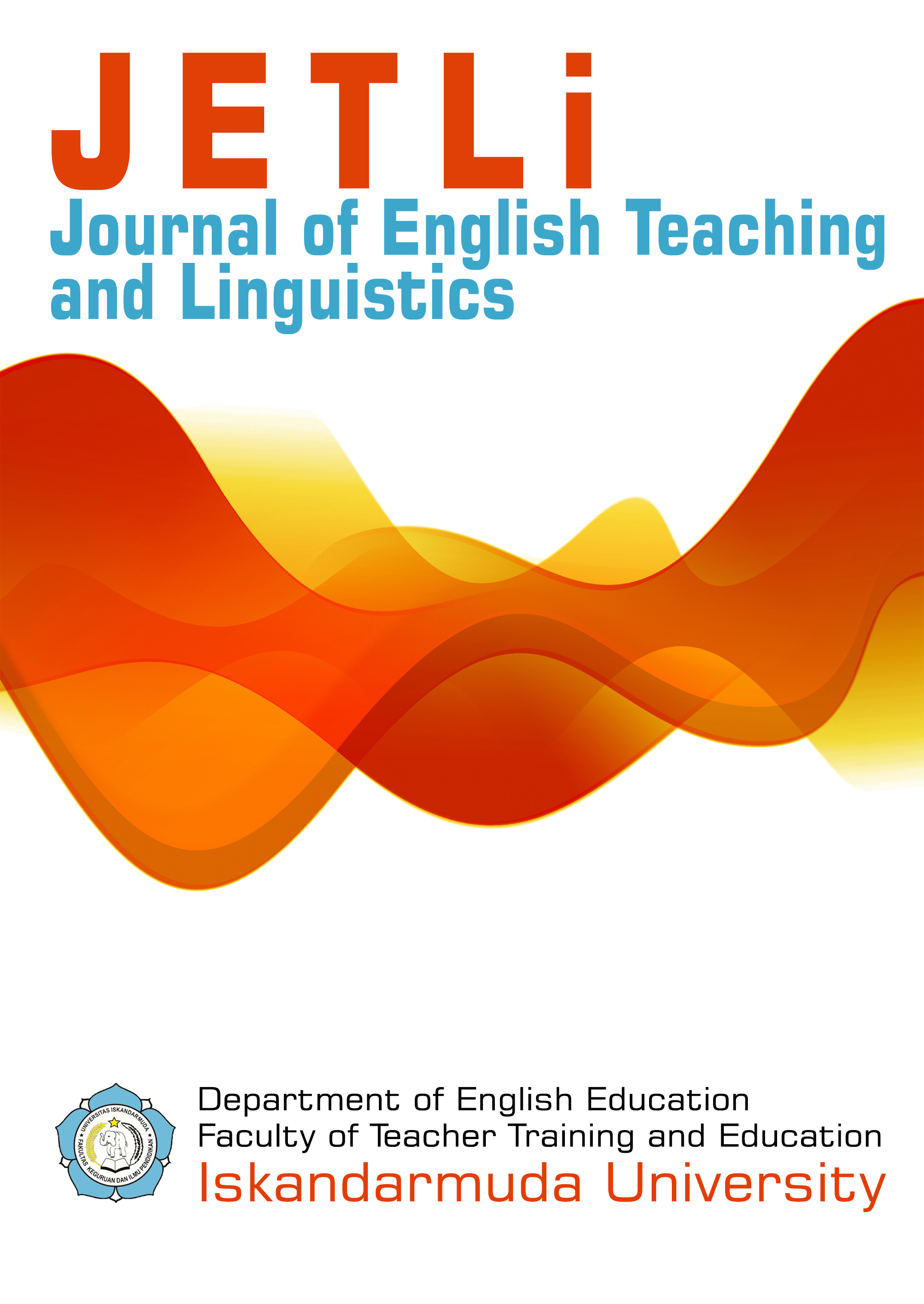THE ERROR ANALYSIS IN USING TENSES MADE BY STUDENTS IN ENGLISH TEACHING AND LEARNING PROCESS
DOI:
https://doi.org/10.55616/jetli.v1i2.21Keywords:
Error Analysis, Tenses, GrammarAbstract
We can find term “Error Analysis” in language. These errors could make misunderstanding of English sentence meaning. Tense is a rule when we want to explain our activities and events in written text. As we are academic students, we must have full understanding about tenses, because if we don’t do it, there is much miscommunication that we got. But students don’t have full understanding about this problem. They assume tense as a big burden. It is a real phenomenon that the researcher found. The goal of this researchwas the students’ progress and every student’s level in understanding tenses. The method of this research used quantitative method. Kinds of errors made by second grade students of Health Information Management in using tenses are omission 50% (omission of simple present tense 50%). The percentage errors of using tenses are simple present 50%, simple past 35% and simple future tense 15%. Students should pay attention seriously in learning tenses because tenses are part of grammar.
References
Arikunto, S. (2006). Prosedur Penelitian Suatu Pendekatan Praktik. [Research Procedure of a Practical Approach]. Ed Revisi VI.
Azar, R. A. (1993). English as a Foreign Language. London: Allen & Unwin.
Brown, H. D. (2004). Principles of Language Learning and Teaching. New York: Longman.
Chaer, A. (2007). Kajian Bahasa. Jakarta: Rineka Cipta.
Carter, R. et al. (1988). Vocabulary and Language Teaching. London: Longman.
Elis, T. V., et al. (1997). Applied Linguistic and the Learning and Teaching of Foreign Language. USA: Arnold
Erdogan. (2005). Constibution of Error Analysis to Foreign Language Teaching. Mersin University Journal of The Faculty of Education.
Gustilo, L., & Magno, C. (2012). Learners’ Error and their Evaluation: The case of Filipino ESL Writers. Philipine ESL Journal, 8(9), pp. 96-113.
Harmer, J. (2012). The Practice of English Language Teaching. London: Longman.
Klasen, R.M., & Chiu, M.M. (2010). Effects on Teachers’ Self-Efficacy and Job Satisfaction: Teacher Gender, Years of Experience, and Job Stress. Journal of Educational Psychology. 102(3), pp. 741-756. https://doi.org/10.1037/a0019237
Kasimini, M., & Siwi, K. (2016). Pocket Book Grammar, Jakarta: C Media.
Kholid, I., & Bambang, I. (2012). Lets Study English: Starting Point for Learning English More. Lampung: State Institute of Islamic Studies Raden Intan Lampung.
Kent, U. (2006). English Verb Tenses: An informal but Extensive Reference the good folks who teach them, the idly curious, and the linguistically perplexed. Article: https://www.chabotcollege.edu/academics/language-arts/esl/docs/verb%20tense%20book%20by%20kent%20uchiyama.pdf
Rizka, B. (2017). The Lexical Process of Acehnese Borrowing. Getsempena English Education Journal. 4(1), pp. 17-26. https://doi.org/10.46244/geej.v4i1.719
Saeed, I. J. (2016). Semantic, Fourth Edition. New Delhi: Willey Blackwell.
Sapir, E. (2000). Language: An Introduction to the Study of Speech. New York: Harcourt
Sarfaz, S. (2011). Error Analysis of the Written English Essays of Pakistani Undergraduate Students: A Case Study. Asian Transactions on Basic & Applied Sciences (ATBAS), 1(3), pp. 29-51. http://citeseerx.ist.psu.edu/viewdoc/download;jsessionid=C0F52D1E65383D9CF6645939E55BCD28?doi=10.1.1.676.1819&rep=rep1&type=pdf
Saeed, J. 2000. Semantics. Republic of China: Blackwell.
Streven, B. S. (1969). A student Grammar of the English Language. England: Longman.
Werner, J. (2007). On Case Grammar. New York: Humanities Press.

Published
How to Cite
Issue
Section

This work is licensed under a Creative Commons Attribution 4.0 International License.
Authors retain copyright and grant the journal right of first publication with the work simultaneously licensed under an Attribution 4.0 International (CC BY 4.0) that allows others to share — copy and redistribute the material in any medium or format and adapt — remix, transform, and build upon the material for any purpose, even commercially with an acknowledgment of the work's authorship and initial publication in this journal.






 Journal of English Teaching and Linguistics
Journal of English Teaching and Linguistics